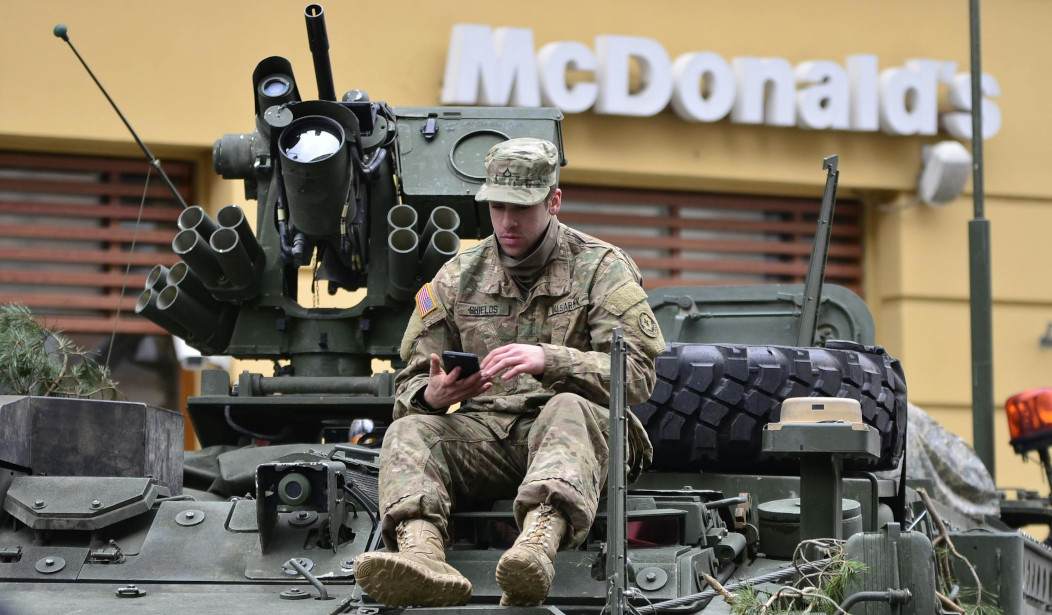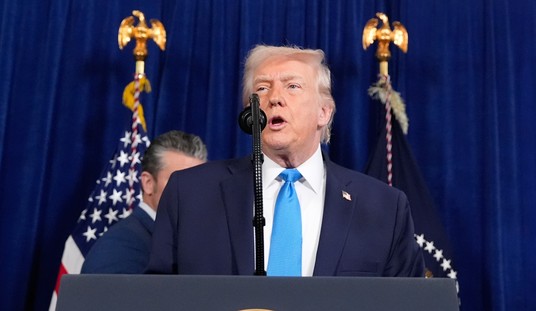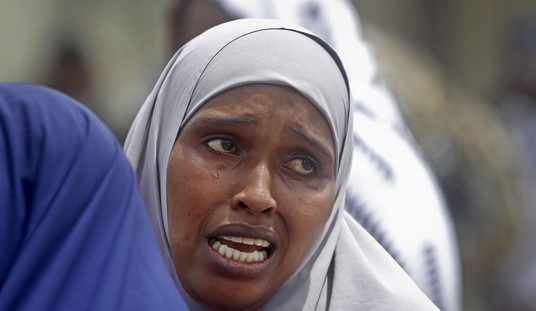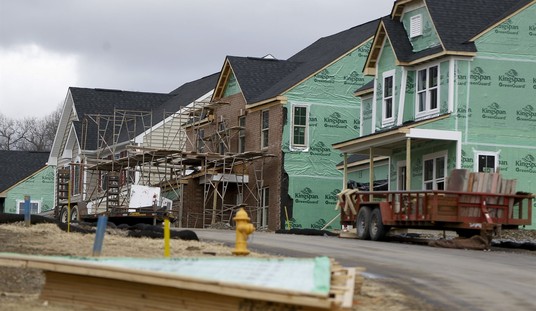Week 115 of Putin's War was mostly more of the same that we've seen for the last six months. Russia continues to hammer away on the front lines in the hope of creating an opportunity for a substantial gain. The passage of the US Ukraine aid package arrived at a critical time for Ukraine and promises, unless Jake Sullivan decides to get involved, to stabilize the Ukrainian equipment and ammunition situation for the remainder of the year.
There were some interesting stories to emerge over the week.
Britain announced it was expelling the Russian defense attache, restricting the movement of Russian diplomats, and closing several Russian-owned facilities in the UK.
(Read UK boots out Russian diplomat, brands him a spy – POLITICO.)
The US passed the REPO Act along with the Israel-Taiwan-Ukraine foreign aid bill. This act permits the seizure of frozen Russian assets in the US to pay for reconstruction activities in Ukraine.
BACKGROUND: The West Will Make Russia Pay to Rebuild Ukraine and This Is How That Will Happen
The EU is about to implement its version of the same policy.
The EU has reached a deal to seize profits from Russia’s frozen assets to fund weapons and aid for Ukraine within months.
EU senior diplomats meeting on Wednesday agreed a compromise on using the estimated €4.4bn windfall profits to aid Ukraine, smoothing over a dispute about taxation and management costs in Belgium, the country where most of the frozen assets are held.
(Read EU reaches deal on using profits from Russia’s frozen assets for Ukraine | Russia | The Guardian.)
The EU has also decided that accession talks for Ukraine will begin on or about June 25.
Both Ukraine and Moldova are expected to formally open EU accession talks in the final week of June. Several diplomats that RFE/RL spoke to on condition of anonymity are confident that a “ceremonial intergovernmental conference” (IGC) will be held in Brussels with the pair just before Hungary takes over the six-month rotating presidency of the Council of the EU on July 1.
This process will not be easy, and given that Putin has two allies in the EU, Hungary and Slovakia, it may end up being impossible. Even without EU membership, it marks a hard break in Ukraine's political history from a "former Soviet republic" to a Western-looking nation.
Here are some of my past updates.
Putin's War, Week 114. Russia Races Against Time As Ukraine Tries to Hold On
Putin's War, Week 112. Ukraine Funding Passes and ATACMS Hit Crimea
Putin's War, Week 111. Russian Offensive Grounds to a Halt and Ukrainian Refinery Attacks Pause
Putin's War, Week 109. Russian Offensive Jammed Up While Ukraine Funding Logjam Breaks
Putin's War, Week 108. Moscow Under Attack and Congress's Struggles Continue
Putin's War, Week 105. Sweden Prepares to Be Heard
For all my Ukraine War coverage, click here.
Politico-Strategic Level
Stay With What Works
Perhaps as a pointed message to Ukraine, the soldiers, and I use the term lightly and advisedly, positioned directly behind Russian President Vladimir Putin at the Victory Day shindig in Moscow, were directly involved in the Bucha massacre.
BACKGROUND: State Department Rightfully and Finally Accuses Russia of Crimes Against Humanity in Ukraine
US Sanctions Russia for Use of Chemical Weapons
The State Department has sanctioned a handful of Russian entities for using prohibited chemical weapons in Ukraine.
State Department: "Russia has used the chemical weapon chloropicrin against Ukrainian forces in violation of the Chemical Weapons Convention (CWC)...Russia has used riot control agents...in Ukraine, also in violation of the CWC. [This] is not an isolated incident." https://t.co/p2HEDdNCc1 pic.twitter.com/jh3oeHsuKQ
— CasualtiesOfTheDay (@Ayei_Eloheichem) May 2, 2024
Chloropicrin is a pesticide that was developed for use as a lethal chemical agent in World War I.
Divine Rule of the Tsar
This is only a little more ridiculous than some stripes of Christians proclaiming Donald Trump was chosen by the Great Jehovah to lead America. Where it is much more dangerous is that Russian Patriarch Kirill leads the official church of Russia. By the way, the Teutonic Knights were the good guys.
◾️ During Putin's inauguration, music from A Life for the Tsar opera played.
— Anton Gerashchenko (@Gerashchenko_en) May 7, 2024
◾️ Patriarch Kirill called Putin "Your Highness" and wished him to rule until his death.
◾️ Putin has a throne in his personal church.
There is no doubt that he considers himself an all-powerful monarch… https://t.co/AcT2LXmdso pic.twitter.com/2OSrRxGyAK
Patriarch Kirill tells Putin the head of state sometimes "has to take fateful, formidable decisions" that "involve victims."
— max seddon (@maxseddon) May 7, 2024
He compares Putin to Alexander Nevsky, the medieval ruler who defeated Teutonic knights, and prays he'll stay in power "until the end of the century." pic.twitter.com/vUSfu0hTAD
Come for the Prokofiev, stay for the Stalinist propaganda.
Zelensky On Moscow's "Most Wanted" ListUkrainian President Volodymyr Zelensky has been added to Russia's "most wanted" list. I guess any transnational political assassination requires some pretext.
RELATED: Zelensky and Other Top Ukrainian Leaders Narrowly Avoid Russian Assassination Attempt
The addition of Ukrainian President Volodymyr Zelenskyy to the Kremlin’s “wanted list” shows “the desperation of the Russian state machine and propaganda,” Ukraine’s ministry of foreign affairs wrote in a statement Saturday.
The list is an online database of those the Russian Ministry of Internal Affairs accuses of being criminals. Russia reportedly said the Ukrainian leader was wanted “under an article of the criminal code” but did not provide further details.
(Read Ukraine claps back after Russia puts Zelenskyy on ‘wanted list’ – POLITICO.)
Operational Level
The big operational news is Russia attempting to open an additional front in the war, threatening Kharkiv from Belgorod Oblast. This attack has been expected for a few months, and I've posted video of Ukrainian construction crews building trenches and bunkers and installing dragon's teeth along the border. The size of the Russian force is estimated at 35,000.
The interns at ISW assert the Russians have five objectives.
The Russian operation in Kharkiv Oblast seeks to advance the following five objectives:
1. Fix Ukrainian forces across the theater to thin Ukrainian forces out along the 600-mile frontline and create opportunities, specifically in Donetsk Oblast.
2. Draw Ukrainian forces towards Vovchansk to facilitate Russia’s ongoing efforts to seize Kupyansk, which has stalled in the past six months.
3. Create a “demilitarized” or “sanitary” buffer zone in Ukraine as the Kremlin has explicitly sought since early 2024.
4. Instill panic in Ukraine.
5. Set conditions for a larger future offensive operation on Kharkiv City.
I think that's sort of ridiculous. The Ukrainians didn't panic after February 22, 2024; they aren't going to panic now. The Russians lack the troop strength and logistical capacity to transform this attack into a major offensive. The level of air and artillery support devoted to the attack indicates a reconnaissance in force or a spoiling attack. Unless the Russians come up with more combat power, they will not create a buffer zone. The numbers are simply not there.
In my view, it has one goal: to draw any Ukrainian operational reserve north and away from what are obviously Russia's main efforts at Chasiv Yar and in the Avdiivka Salient.
There was an interesting interview given by the deputy head of Ukraine's Military Intelligence, Major General Vadym Skibitsky, to The Economist.
He sees challenging times ahead for Ukraine in the next few months.
He predicts that Russia will first press on with its plan to “liberate” all of Ukraine’s eastern Donetsk and Luhansk regions, a task unchanged since 2022. He says a Russian order has gone out to “take something” in time for the pomp of Victory Day in Moscow on May 9th, or, failing that, before Vladimir Putin’s visit to Beijing a week later. The speed and success of the advance will determine when and where the Russians strike next. “Our problem is very simple: we have no weapons. They always knew April and May would be a difficult time for us.”
He predicts that Chasiv Yar will eventually fall after being bombed into bouncing rubble, “Not today or tomorrow, of course, but all depending on our reserves and supplies.”
He also gives his prediction for the outcome of the war.
General Skibitsky says he does not see a way for Ukraine to win the war on the battlefield alone. Even if it were able to push Russian forces back to the borders—an increasingly distant prospect—it wouldn’t end the war. Such wars can only end with treaties, he says. Right now, both sides are jockeying for the “the most favourable position” ahead of potential talks. But meaningful negotiations can begin only in the second half of 2025 at the earliest, he guesses. By then, Russia will be facing serious “headwinds”. Russian military production capacity has expanded but will reach a plateau by early 2026, he reckons, due to shortages in material and engineers. Both sides could eventually run out of weapons. But if nothing changes in other respects, Ukraine will run out first.
The general says the largest unknown factor of the war is Europe. If Ukraine’s neighbours do not find a way of further increasing defence production to help Ukraine, they too will eventually find themselves in Russia’s crosshairs, he argues. He plays down Article 5 of nato’s collective-defence charter and even nato’s troop presence in states bordering Ukraine, which he says may mean little when put to the test. “The Russians will take the Baltics in seven days,” he argues, somewhat implausibly. “nato’s reaction time is ten days.”
Though he's been quoted in social media as saying Ukraine can't win the war, what he says is that it can't be won on the battlefield alone. He refers to winning as a cessation of hostilities rather than a frozen conflict like that in Korea. If you've been following the story, that's why Ukraine has negotiated a series of bilateral security agreements, eight at last count, and is on the verge of signing one with the US.
BACKGROUND: Putin's War, Week 110.
On the whole, a skillful job of setting expectations for the next year and lowballing expectations for Ukrainian success on the battlefield.
First Iskander Missile Launchers Destroyed
Ukraine used ATACMS to destroy at least two Transporter-Erector-Launchers (TELs) for the Iskander ballistic missile system. This is the first time Ukraine has targeted Iskander missile launchers, and it is only possible because of the extended-range ATACMS they recently received and a bit of help from somewhere in locating the launchers. Placing Iskander systems in Crimea at risk of attack will greatly contribute to making Ukraine's cities safer.
I've posted several times on how Elon Musk's Starlink has tried to play both ends of Putin's War. It got a major PR boost early on when it provided Starlink to the Ukrainian military free of charge. Then we found that Starlink had geofenced Occupied Crimea and Russia, so Ukraine could not use it to attack targets outside the areas invaded by Russia in February. In particular, the decision protected the Russian Black Sea Fleet in Sevastopol.
BACKGROUND: Elon Musk, Ukraine, and Why Money Can't Buy Common Sense or Morality
Then, we found that Starlink was allowing the Russian military to use Starlink inside of Occupied Ukraine.
BACKGROUND:
Putin's War, Week 102. Zaluzhny Is Out, Syrsky Is In, and the Ukraine Aid Bill Advances
Putin's War, Week 103. Avdiivka Abandoned
Even after Starlink denied it was happening, online ads from Starlink's Chinese reseller selling Starlink terminals in Russia were easy to find.
BACKGROUND: Putin's War, Week 105. Sweden Prepares to Be Heard
Eventually, there was enough heat that Starlink turned to the Pentagon for help solving its massive credibility and public relations problems.
BACKGROUND: Putin's War, Week 109. Russian Offensive Jammed Up While Ukraine Funding Logjam Breaks
That seems to have finally happened.
The Pentagon is working with SpaceX to block Russian military access to Starlink
— OSINT (Uri) 🇺🇸 🇨🇦 🇬🇧 🇺🇦 🇮🇱 (@UKikaski) May 9, 2024
"Representatives of the US Department of Defense, in cooperation with Elon Musk's company SpaceX, put an end to the unauthorized use of Starlink Internet terminals on the battlefield by the Russian…
Large-Scale Attacks on Ukrainian Energy Infrastructure Continue
Official numbers by the Ukrainian Air Force about the combined missile and drone attack overnight.
— NOELREPORTS 🇪🇺 🇺🇦 (@NOELreports) May 8, 2024
Shot down 59/76 air targets:
0/1 Kinzhal-47M2
0/2 Iskander-M ballistic
4/4 Kalibr cruise missile
33/45 Kh-101/555 cruise missile
0/1 Iskander-K cruise missile
2/2 Kh-59/69 cruise… pic.twitter.com/VXCQTKhyFd
Ukrainian Grain Corridor Continues to Operate
Shipments of Ukrainian grain continue to head to world markets even though Russia has declared a naval blockade of Ukrainian ports.
UkriCor Update 09May2024
— exit266 (@exit266) May 9, 2024
Possibilities Ships (Current) 91
Ships Inbound to Odesa (Total) 1604
Ships in Odesa (Current) 49
Ships Delivered to Greater Odesa (Total) 109
Ships Outbound from Odesa (Total) 1551
Ships Outbound, Not Delivered (Current) 231
Ships Outbound, Delivered… pic.twitter.com/VRJYKlNcwg
New Weapons
Armed USV
The Ukrainians have pioneered the development of unmanned surface vehicles (USVs) and used them to drive the Russian Black Sea Fleet from Sevastopol. They now seem on the way to fielding a USV capable of self-defense. In this video, a Russian attack helicopter encounters a Ukrainian USV armed with a surface-to-air missile. The helicopter wins this bout, but it marks a tremendous leap in capability.
Over-and-Under Weapons Make a Comeback
The ubiquity of FPV drones has complicated the life of frontline infantry. I've half-joked that it may be time to give each squad a semi-automatic shotgun. The Russians have taken this in a slightly different direction. They've developed a subcaliber insert for a grenade launcher letting it shoot what looks like 12-gauge (or whatever the Euros use) shotgun rounds.
Perhaps it's time to bring back the buckshot round for our 40mm grenade launcher?
Turtle-zilla
The Russians have been carrying out field modifications of their armored vehicles to address their extreme vulnerability to many Western weapons systems in Ukrainian service. The first iteration was the "cope cage," which was supposed to offer protection from top-attack anti-tank missiles. SPOILER ALERT: It doesn't. As the number of drones increased, side skirting was added. Now, we may have reached the pinnacle of field expedience.
None of that armor will stop anti-tank missiles or tank main gun rounds. The penalty paid for this ephemeral safety is covering the tank's sensor and optics and reducing its ability to traverse the turret. And the crew isn't going anywhere very fast if they have to bail out.
Extended Range Artillery Ammunition
Rheinmetall is sending Ukraine 155mm artillery ammunition that has nearly double the current ammunition range.
Combat Operations
ATACMS Comes Calling
Four ATACMS missiles hit a Russian training facility in Luhansk. Russian Telegram sources put the casualty count at over 100.
The video is over six minutes long. The action starts at 3:52 when a dud ATACMS hits the target area. The warhead is DPICM.
Seems like 🇺🇦did another ATACMS strike near Kuban, Luhansk.
— JB Schneider (@JohnB_Schneider) May 1, 2024
Action starts at 03:50. A dud and 3 hits within a minute. pic.twitter.com/aGP4cWKY07
Remote Mining
Mines, along with drones, have become the weapons that epitomize Putin's War. Last summer, the Ukrainian offensive was effectively halted by massive minefields. While the Russians specialize in manually installing mine belts, the Ukrainians rely more on artillery-delivered mines to break up Russian attacks.
The favorite system for that is the 155mm Remote Anti-Armor Mine System. Sorry, this is the only video I can find on the system.
@prestonstew Remote anti armor mine system headed to Ukraine. This is a scatterable mine system that is fired from a 155mm howitzer and disperses antitank mines over a set area on the battlefield.
♬ original sound - Preston Stewart
This Russian attack took place in the vicinity of Chasiv Yar. As the attacking vehicles are still well away from Ukrainian lines, a minefield is emplaced on their route.
Humm-Xis in the Attack
I've posted before about the Russians using Chinese-made Desertcross ATVs as assault vehicles. The theory seems to be much the same as that behind assault motorcycles. The higher speed reduces the time spent in the beaten zone, bolstered by a faith-like belief that their speed reduces their vulnerability.
BACKGROUND: Putin's War, Week 112. Ukraine Funding Passes and ATACMS Hit Crimea
This is the first video I've seen of the Humm-Xis being used in an assault role.
Troops begin bailing out of the ATVs at 0:36 and charge the treeline, firing as they go. The ATVs leave at 0:55. At 1:06, the Russians come under what looks like mortar fire and enter the treeline, and I presume fortified area, at 1:30. About four Russians are killed in the charge. Fighting continues until a large caliber artillery round strikes about where most of the Russian troops are at 2:19. From the fragmentation pattern; it was a Russian artillery round.
Things That Make You Go Hmmm...
I can't think of any reason for this other than the projecticles are defective in some significant way. What we don't know is where the ammunition was manufactured. My guess is that it is some of the North Korean crap, but if these shells came out of a Russian plant, it is a very significant happening.
Tactics, Techniques, and Procedures
About That Proof of Concept
I've posted about the Russians creating motorcycle assault units. They are working out about as well as expected.
BACKGROUND: Putin's War, Week 112. Ukraine Funding Passes and ATACMS Hit Crimea
...You Just Die Tired
I have to give these guys credit for their persistence from the enthusiastic start through all the failures to the thundering climax.
In addition to the topic of Russian assaults on motorcycles. Detailed video of how the attack of two Russian motorcyclists took place. Zaporizhzhia Front. https://t.co/9uLQQYv0Fo https://t.co/nj7feEIPra pic.twitter.com/uhzpaJ2ICT
— Special Kherson Cat 🐈🇺🇦 (@bayraktar_1love) May 8, 2024
The Least Preferred Technique
Russian troops somewhere train to dodge FPV drones.
When I Grow Up, I Want to be Just Like Him
MUST WATCH: Russian commander's motivational speech to his new batch of cannon fodder before they are sent to certain death on the front lines in Ukraine. pic.twitter.com/F5xbmMUDRr
— Igor Sushko (@igorsushko) May 3, 2024
Northern Front
Kharkiv
Around 0500 Friday, Russian forces opened a new front, attacking out of Belgorod Oblast into the northern frontier of Ukraine's Kharkiv Oblast. There is no definitive word on the situation, but the Ukrainian defensive line seems to be holding.
The russians may launch an offensive on the Kharkiv region in mid-May: 50,000 troops are preparing at the border, — Kraken commander Kostiantyn Nemichev.
— ✙ Albina Fella ✙ 🇺🇦🇬🇧🇫🇷🇩🇪🇵🇱🇺🇸🇨🇦🇦🇺 (@albafella1) May 10, 2024
However, it is noted that the russian occupiers will not be able to reach the city, since the defense has become much… pic.twitter.com/5JGLBZ2kU3
Donbas
Bahkmut-Klishchiivka-Andriivka
As I noted last week, the Russian attempt to take Chasiv Yar seems to have reached its culminating point. Ukrainian reinforcements have arrived, new ammunition stocks are available, and Russian progress has halted. In honor of the occasion, I'm using a map and tweet by the Russian milblogger group "Rybar."
❗️🇷🇺🇺🇦 The Battle for Chasiv Yar. Offensive actions by the Russian Armed Forces continue in the vicinity of Chasiv Yar.
— Rybar Force (@rybar_force) May 4, 2024
🔻On the northern flank, given the enemy's control over Hryhorivka and Kalynivka, it has not been possible to advance so far - in part due to counterattacks by… pic.twitter.com/pulRVFoXbO
Avdiivka
Russian forces continued to make small gains on the southern side of the former Avdiivka Salient. This has been the most successful avenue of advance for the Russian Army.
Russian forces recently made confirmed advances near Avdiivka and Donetsk City.
— Institute for the Study of War (@TheStudyofWar) May 10, 2024
Geolocated footage published on May 9 shows that Russian forces advanced into central Umanske (west of Avdiivka) north of Sonyachna Street. (1/2) https://t.co/l9xU0We4vq pic.twitter.com/9ychvgnMEy
Southern Front
Zaporizhzhia
Robotyne-Verbove- Novoprokopivka
Combat in this area has been sporadic and confined to small unit actions. Both sides have made minor positional gains, but the front line remains stable.
— Institute for the Study of War (@TheStudyofWar) May 9, 2024
Partisan Activity
Kherson
Combat continues around the Ukrainian lodgment on the left bank of the Dnieper. Neither side conducted large-scale offensive activities, and the lines remained unchanged.
Rear Areas
Russia
Salavat Oil Refinery
Yurovka Oil Refinery
Pershiy Zavod Oil Refinery
This is one of Russia's largest oil refineries, and this attack is the second time it has been hit.
So confirmation of another attack on an oil refinery in #Russia, the second in 2 months at this partuicular site.
— Tim White (@TWMCLtd) May 10, 2024
Pershiy Zavod is the largest refinery in the region - the main complex for the processing of commercial oil and gas condensate, and the capacity is 1.2m tons/yr pic.twitter.com/C7VqetpWhl
BACKGROUND: Russian Cities Hit and One Airbase Thrashed as Russia Comes Under Intense Ukrainian Attack
What's Next
Barring the unforeseen collapse of a large section of the line held by one of the combatants, I think the next six weeks are going to look a lot like the last. Russia is going to continue to try to force a penetration of Ukrainian lines around Chasiv Yar and in the Avdiivka Salient. The lack of success at Chasiv Yar indicates that in a couple of weeks, that area will become much quieter as troops are transferred south to the Avdiivka area.
At this point, I think the new offensive in Kharkiv is designed to be a distraction for the Ukrainians. No matter how many men Russia conscripts, the bottom line is that it isn't making more trains or trucks and is not laying a foot of east-west railroad track. Without more logistics vehicles and miles of railroad track running in the correct direction, the size of Russian offensives is limited by the volume of food, fuel, and ammunition that can be transloaded from railcars in eastern Donbas onto trucks for movement to the front. The next couple of weeks will give us a better idea of how successful this gambit has been.
But all the action is not taking place on the front lines. Ukraine's employment of extended-range ATACMS has placed at risk Russian missile and early warning radar units in Crimea. Russian aircraft have been virtually driven from Crimea along with the Black Sea Fleet. The strike on a Russian training ground last week that killed over 100 Russian soldiers makes training Russian conscripts a much more fraught enterprise.
From the level of activity by the Russians, I think they know that, unlike their propaganda, which is shamelessly repeated in conservative circles, that time is not on Russia's side. Support for Ukraine is becoming an article of faith in much of Europe, and the transfer of military equipment is becoming more routine. Russia's industrial base is struggling qualitatively and quantitatively to keep up with demand. In critical areas, like artillery, it isn't.
For now, Russian ground attacks continue at the same frenetic pace that started in late October. The Ukrainians are giving some ground but extracting a high price for it. I think the air goes out of Russia's balloon before July 1. I also remain convinced that despite all the interviews to the contrary, we will see a large-scale Ukrainian offensive, probably in Zaporizhzhia, before the next rainy season.














Join the conversation as a VIP Member